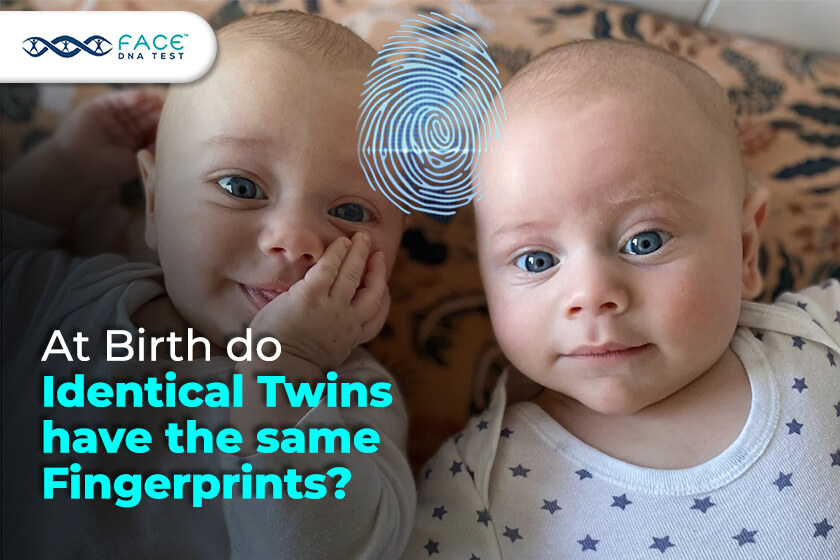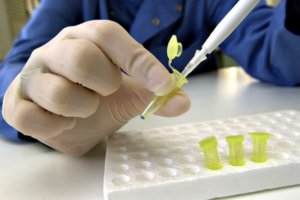Humans have fingertips with uneven surfaces that aid with grip. They also help in the perception of texture differences. Around the 13th week of pregnancy, the appearance of initial ridges indentations in the fingertips marks the beginning of the relatively early development of fingerprints in fetuses. Similar to how the rest of us create distinct fingerprints on each finger, identical twins also produce unique fingerprints.
Nonetheless, twins with identical fingerprints have been documented. It’s a myth that the fingerprints of twins are the same. Even though identical twins are similar in many physical ways, every individual has a different fingerprint. Continue reading to find out more about the differences between identical twins and the impossibility of shared fingerprints.
What Are the Two Types of Twins?
Twins can be either identical or fraternal. DNA, or their genetic composition, is ultimately responsible for the disparities.
Fraternal twins
Two distinct eggs and two different sperm are used to create fraternal twins. That’s why fraternal twins share 50% of their DNA, according to the Minnesota Centre for Twin and Family Research. A fraternal pair of twins containing one male and one girl is feasible because they share no more DNA than siblings who aren’t twins. However, this is not achievable with identical twins.
Identical twins
Contrarily, identical twins develop within a single egg that divides into two, giving rise to two people with DNA that is somewhat similar but not precisely the same. Since their DNA is similar, they have many physical characteristics in common, such as skin tone, eye and hair colors, and hair colors. According to some estimates, one in four identical twins really resembles the other.
The physical looks of identical twins might still change somewhat due to environmental circumstances, though, and this is essentially how other people can distinguish them. Height and weight are two examples of fundamental disparities. These genetic similarities do not apply to fingerprints, though. This is because the development of fingerprints is influenced by both genetic and environmental elements within the womb.
Do identical twins have the same fingerprints?
Fingerprints are the specialized impressions and patterns on fingers that involve loops, arches, and whorls. These patterns’ arrangements, distribution, and orientation make an individual fingerprint unique and different. In addition to the genetic factors, some environmental factors are also there that can precisely influence the shaping of fingerprints.
- During the development phase of the fetus, the pressure on the ridges or its contact leads to changes in its arrangements. This can cause slight differences in the fingerprints of identical twins.
- Moreover, the movements of the baby’s fingers can also cause changes in the orientation of specific patterns.
How do Fingerprints Emerge?
The formation of an individual’s fingerprints in the womb is determined by a confluence of environmental and genetic variables. DNA plays a function in deciding fingerprints. This explains why two identical twins may first seem to have similar fingerprints. To ensure that the fingerprints of identical twins are different, environmental influences from within the womb also have a role in the formation of fetal fingerprints. Hence, the ridges, whorls, and loops in the fingerprints of identical twins may resemble one another. But if you look more closely, you’ll see that some of the minor details, like the gaps between ridges and the divides between branch markings, are different.
There is some subtle difference in identical twins DNA because of genetic mutations or gene expression variations. The fascinating interaction between genes and environment can influence two individuals’ genetic and physical resemblance. The shared genetic markers between twins can be found by employing a reliable sibling DNA test offered by Face DNA.
Can identical twins be different genders?
No, usually, identical twins cannot be of different genders. It is clear that they come from a single egg, and a single sperm fertilizes this egg. This fertilized egg undergoes division after fertilization and equally transfers the genetic material to both zygotes. We can say that the egg might have moved either X chromosomes or one Y and one X chromosome.
In sporadic cases, there might be a chance for identical twins to have different genders. This is mainly because of a mutation or genetic abnormality. On the other hand, paternal twins are formed when two sperm fertilize two separate eggs. The genetic content of both fertilized eggs is different, indicating a 50% probability of having male or female twins.
What Are the Odds of Twins Having the Same Fingerprints?
There is very little likelihood of identical fingerprints in identical twins. Despite the fact that anecdotal posts on the internet frequently highlight the potential that the science could be incorrect, there is no proof that identical twins can have the same fingerprints. The fingerprint’s composition isn’t the same, even though it resembles the human eye in such a way. According to the National Forensic Science Technology Centre, “No two people have ever been found to have the same fingerprints, not even identical twins.” It’s also crucial to remember that each finger on your body has a different fingerprint, meaning that your fingerprints are unique.
However, the myth that identical twins have the same fingerprints has been mentioned in a few research. Examined samples of the identical twins’ fingerprints from various perspectives to study fingerprints. It was discovered that at first glance, fingerprints might appear very same. However, you may identify the differences by analyzing several sets from various perspectives.
Don’t Ruin Your Relationship By Misunderstanding.
Get Accurate Answers With Our Paternity Test!.
-
- Accurate
- Quick Result
- Private and Secure
- Affordable

Conclusion
Despite minor cosmetic distinctions, identical twins share a highly matched genetic composition. However, identical twins all have different fingerprints, just like non-twins. It is impossible for identical twins to have exactly the same fingerprints because of environmental influences that alter their development within the womb after conception. Learn more about the familial complexities with our relationship DNA test that the Face DNA test offers.






Leave a Reply
Your email is safe with us.
You must be logged in to post a comment.